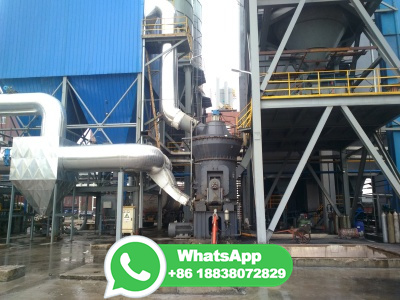
It is the coal with the lowest carbon content. The carbon content is only about 6070 %. It is formed during the younger stages of coal formation and thus has a lower carbon content. Due to the less amount of carbon, it is not fully black in colour and is somewhat brown. Lignite is used in electricity generation and in fertilizer production.
WhatsApp: +86 18838072829
Coal rank is a measure of coal maturity and is the most fundamental concept that relates both to the coalification history and utilization potential of a coal. Fig. shows the change in chemical and physical properties with rank from bituminous to anthracite coals ( Teichmuller Teichmuller, 1975 ).
WhatsApp: +86 18838072829
Natural gas is a fossil fuel energy source. Natural gas contains many different compounds. The largest component of natural gas is methane, a compound with one carbon atom and four hydrogen atoms (CH 4 ). Natural gas also contains smaller amounts of natural gas liquids (NGLs, which are also hydrocarbon gas liquids ), and nonhydrocarbon gases ...
WhatsApp: +86 18838072829
There are four stages in the coal formation. They are peat, lignite, bituminous and anthracite. These stages depend upon the conditions to which the plant remains are subjected after they were buried. Greater the pressure and heat, the higher the rank of coal. Higherranking coal is denser and contains less moisture and gases and has a higher ...
WhatsApp: +86 18838072829
Coal is a black solid or sedimentary rock, which is combustible in nature. It has a large amount of carbon in it almost 50% of its weight. The formation of coal takes a long long time. The first coalbearing rock is said to have appeared about 350 million years ago. This period was known as the carboniferous period or the "coalbearing ...
WhatsApp: +86 18838072829
Question 8: Explain the process of formation of petroleum. Answer: Petroleum is formed by the burial of aquatic plants and animals below the sea bed. The marine animals and plants died thousands of years ago and settled down in the bottom of the sea. In anaerobic conditions, microorganisms decompose this organic matter.
WhatsApp: +86 18838072829
Petroleum, also known as crude oil, or simply oil, is a naturally occurring yellowishblack liquid mixture of mainly hydrocarbons, and is found in geological name petroleum covers both naturally occurring unprocessed crude oil and petroleum products that consist of refined crude oil.. Petroleum is primarily recovered by oil drilling. ...
WhatsApp: +86 18838072829
Oil or petroleum is a readily combustable fossil fuel that is composed mainly of carbon and hydrogen, and is thus known as a hydrocarbon. The formation of oil takes a significant amount of time with oil beginning to form millions of years ago. 70% of oil deposits existing today were formed in the Mesozoic age (252 to 66 million years ago), 20% were formed in the Cenozoic age (65 million years ...
WhatsApp: +86 18838072829
71,757 How is Coal Formed? The formation of coal takes millions of years, which is why it is an exhaustible and nonrenewable natural resource. It was formed around 300 million years ago when the earth was covered with swampy forests. When plants in these forests mainly trees, mosses, ferns, and reeds died, they fell into the swamps.
WhatsApp: +86 18838072829
Coal is extracted from mines. The wood is converted first into a spongy material called peat, then lignite, and eventually into coal (anthracite) and following these steps coal is formed. Carbonization: The slow process of conversion of wood into coal over millions of years is called carbonization.
WhatsApp: +86 18838072829
Carbon monoxide (chemical formula CO) is a poisonous, flammable gas that is colorless, odorless, tasteless, and slightly less dense than monoxide consists of one carbon atom and one oxygen atom connected by a triple is the simplest carbon coordination complexes, the carbon monoxide ligand is called is a key ingredient in many processes in industrial ...
WhatsApp: +86 18838072829
Coal, one of the world's most impactful fossil fuels, was formed millions of years ago, in very specific conditions. Most of the coal on Earth formed approximately 300 million years ago from the ...
WhatsApp: +86 18838072829
Origin and occurrence of coal. Coals are obtained by natural 300 million years ago the earth had dense forests in low lying wetland to natural processes,like flooding, these forests buried under soil deposited over them they were compressed.
WhatsApp: +86 18838072829
Coking. Coking coal is an essential raw material for the production of iron and steel. Coke is a solid carbonaceous residue formed from coking coal (a lowash, lowsulphur bituminous coal, also known as metallurgical coal), which is used in make steel and other iron products [].Coke is produced by burning coal at temperatures up to 1000 °C in the absence of oxygen to remove the volatile ...
WhatsApp: +86 18838072829
sedimentary rock, rock formed at or near Earth's surface by the accumulation and lithification of sediment (detrital rock) or by the precipitation from solution at normal surface temperatures (chemical rock). Sedimentary rocks are the most common rocks exposed on Earth's surface but are only a minor constituent of the entire crust, which is dominated by igneous and metamorphic rocks.
WhatsApp: +86 18838072829
When coal burns, it releases carbon dioxide and other emissions in flue gas, the billowing clouds you see pouring out of smokestacks. Some clean coal technologies purify the coal before it burns. One type of coal preparation, coal washing, removes unwanted minerals by mixing crushed coal with a liquid and allowing the impurities to separate and ...
WhatsApp: +86 18838072829
How Is Coal Formed A Process Spanning Eras Updated on High School 5 min read Like oil and natural gas, is a fossil . It started forming over 350 million years ago, through the transformation of organic plant matter. © THINKSTOCK Coal was formed more than 300 million years ago.
WhatsApp: +86 18838072829
Coal is a combustible rock mainly composed of carbon along with variable quantities of other elements, mostly hydrogen, sulphur, oxygen and nitrogen. Coal occurs as layers, called coal beds or coal seams, that are found between other sedimentary rocks. Coal is slightly denser than water but less dense than most of the rocks of the Earth's crust ...
WhatsApp: +86 18838072829
It is used as fuel. It is a better fuel than coal because it produces more heat on burning than an equal amount of burns without producing any smoke whereas coal produces a lot of smoke on burning. Question 8 Explain the process of formation of petroleum. Answer It was formed by the decomposition of the remains of tiny plants and ...
WhatsApp: +86 18838072829
Chemistry Coal and Petroleum Formation Of Fossil Fuels Formation of Coal How is Coal Formed? Coal is fossil fuel or fuel that comes from the remains of prehistoric plants or animals. The formation of coal occurs over millions of years via a process known as carbonation.
WhatsApp: +86 18838072829
1) Formation in Earth's Mantle. Geologists believe that the diamonds in all of Earth's commercial diamond deposits were formed in the mantle and delivered to the surface by deepsource volcanic eruptions. These eruptions produce the kimberlite and lamproite pipes that are sought after by diamond prospectors. Most of these pipes do not contain ...
WhatsApp: +86 18838072829
There are four major types (or "ranks") of coal. Rank refers to steps in a slow, natural process called "coalification," during which buried plant matter changes into an ever denser, drier, more carbonrich, and harder material. The four ranks are: Anthracite: The highest rank of coal. It is a hard, brittle, and black lustrous coal, often referred to as hard coal, containing a high ...
WhatsApp: +86 18838072829
Charcoal. Wood pile before covering with turf or soil, and firing it ( c. 1890) Charcoal is a lightweight black carbon residue produced by strongly heating wood (or other animal and plant materials) in minimal oxygen to remove all water and volatile constituents. In the traditional version of this pyrolysis process, called charcoal burning ...
WhatsApp: +86 18838072829
Coal is the most abundant fossil fuel on Earth. Its predominant use has always been for producing heat energy. It was the basic energy source that fueled the Industrial Revolution of the 18th and 19th centuries, and the industrial growth of that era in turn supported the largescale exploitation of coal deposits. Since the mid20th century, coal has yielded its place to petroleum and natural ...
WhatsApp: +86 18838072829